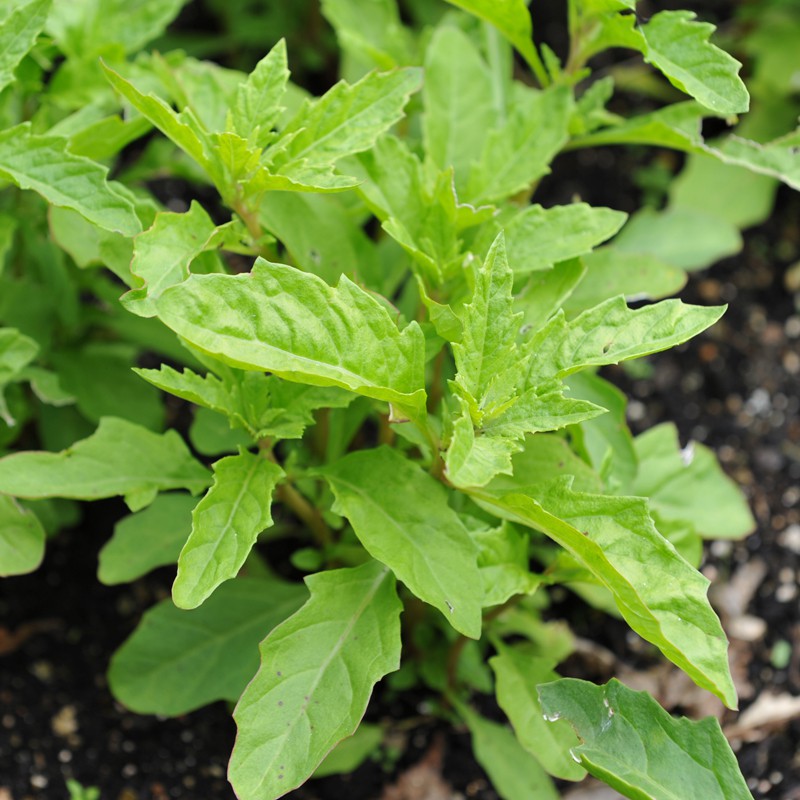Epazote: The Companion Plant That Keeps Pests Away
Epazote: The Companion Plant That Keeps Pests Away
Epazote, also known as Mexican tea or Jesuit's tea, is a pungent herb that has been used for centuries in traditional Mexican cuisine. It has a strong, earthy flavor that can be used to flavor a variety of dishes, including beans, soups, and stews.
In addition to its culinary uses, epazote is also a valuable companion plant for the garden. It has been shown to repel a variety of insect pests, including whiteflies, aphids, and squash bugs. It can also help to improve the growth and yield of other plants.
How Does Epazote Repel Pests?
The compounds in epazote that repel pests are thought to be the essential oils that give it its strong aroma. These oils can mask the scent of other plants that are attractive to pests, making them less likely to be targeted. Additionally, the oils can irritate the skin and respiratory system of pests, making them less likely to want to stay in the area.
Which Pests Does Epazote Repel?
Epazote has been shown to be effective at repelling a variety of insect pests, including:
- Whiteflies
- Aphids
- Squash bugs
- Cucumber beetles
- Mexican bean beetles
- Leafhoppers
- Thrips
- Spider mites
How to Use Epazote as a Companion Plant
Epazote can be planted near a variety of vegetables, including beans, tomatoes, peppers, squash, and corn. It is also a good companion plant for herbs, such as basil, oregano, and thyme.
To plant epazote as a companion plant, simply sow the seeds in the spring or early summer. Epazote prefers full sun and well-drained soil. It is a relatively low-maintenance plant and does not require much water.
Benefits of Using Epazote as a Companion Plant
In addition to repelling pests, epazote also has a number of other benefits as a companion plant. It can:
- Improve the growth and yield of other plants
- Attract beneficial insects, such as ladybugs and lacewings, which help to control pests
- Improve the soil by adding nutrients and organic matter
- Deodorize the soil, making it less attractive to pests
How to Harvest Epazote
Epazote can be harvested throughout the growing season. The leaves can be picked individually or the entire plant can be harvested. If you are harvesting the entire plant, cut it back to about 6 inches from the ground. The plant will resprout and you can continue to harvest it throughout the season.
How to Store Epazote
Epazote can be stored fresh, dried, or frozen. To store fresh epazote, wash the leaves and pat them dry. Then, wrap them in a damp paper towel and store them in the refrigerator for up to 3 days.
To dry epazote, wash the leaves and pat them dry. Then, spread them out on a baking sheet and place them in a warm, dry place. The leaves will be dry when they crumble easily. Store the dried epazote in an airtight container in a cool, dark place.
To freeze epazote, wash the leaves and pat them dry. Then, chop the leaves and place them in a freezer bag. Store the frozen epazote in the freezer for up to 6 months.
Conclusion
Epazote is a versatile herb that can be used in both culinary and medicinal applications. It is also a valuable companion plant for the garden, as it can help to repel pests and improve the growth and yield of other plants. If you are looking for a way to add some extra flavor and pest control to your garden, epazote is a great option.
null
FAQ of epazote companion plants
Q: What are good companion plants for epazote?
A: Epazote is a member of the mint family, and as such, it benefits from being planted near other herbs in the mint family, such as basil, oregano, and thyme. These herbs all attract beneficial insects, which help to control pests. Epazote also benefits from being planted near tomatoes, as it helps to deter tomato hornworms. Other good companion plants for epazote include beans, corn, and squash.
Q: What are some plants that should not be planted near epazote?
A: Epazote should not be planted near cucumbers, as they can compete for nutrients. Epazote also produces a chemical that can inhibit the growth of some plants, such as carrots and potatoes.
Q: How far apart should epazote plants be planted?
A: Epazote plants should be planted about 12 inches apart. This will give them enough space to grow and spread.
Q: How much water do epazote plants need?
A: Epazote plants are relatively drought-tolerant, but they will need more water during hot, dry weather. Water them deeply when the soil is dry to the touch.
Q: How do I harvest epazote?
A: You can harvest epazote leaves as needed. The leaves are best when they are young and tender. To harvest, simply snip off the leaves from the top of the plant.
Image of epazote companion plants
- Tomatoes: Epazote is a good companion plant for tomatoes because it helps to repel pests like tomato hornworms.
- Beans: Epazote can also help to improve the nitrogen content of the soil, which is beneficial for beans.

- Cucumbers: Epazote can help to repel cucumber beetles, which are a common pest of cucumbers.

- Peppers: Epazote can help to improve the flavor of peppers, and it can also help to repel pests like aphids.

- Squash: Epazote can help to repel squash bugs, which are a common pest of squash.
Post a Comment for "Epazote: The Companion Plant That Keeps Pests Away"